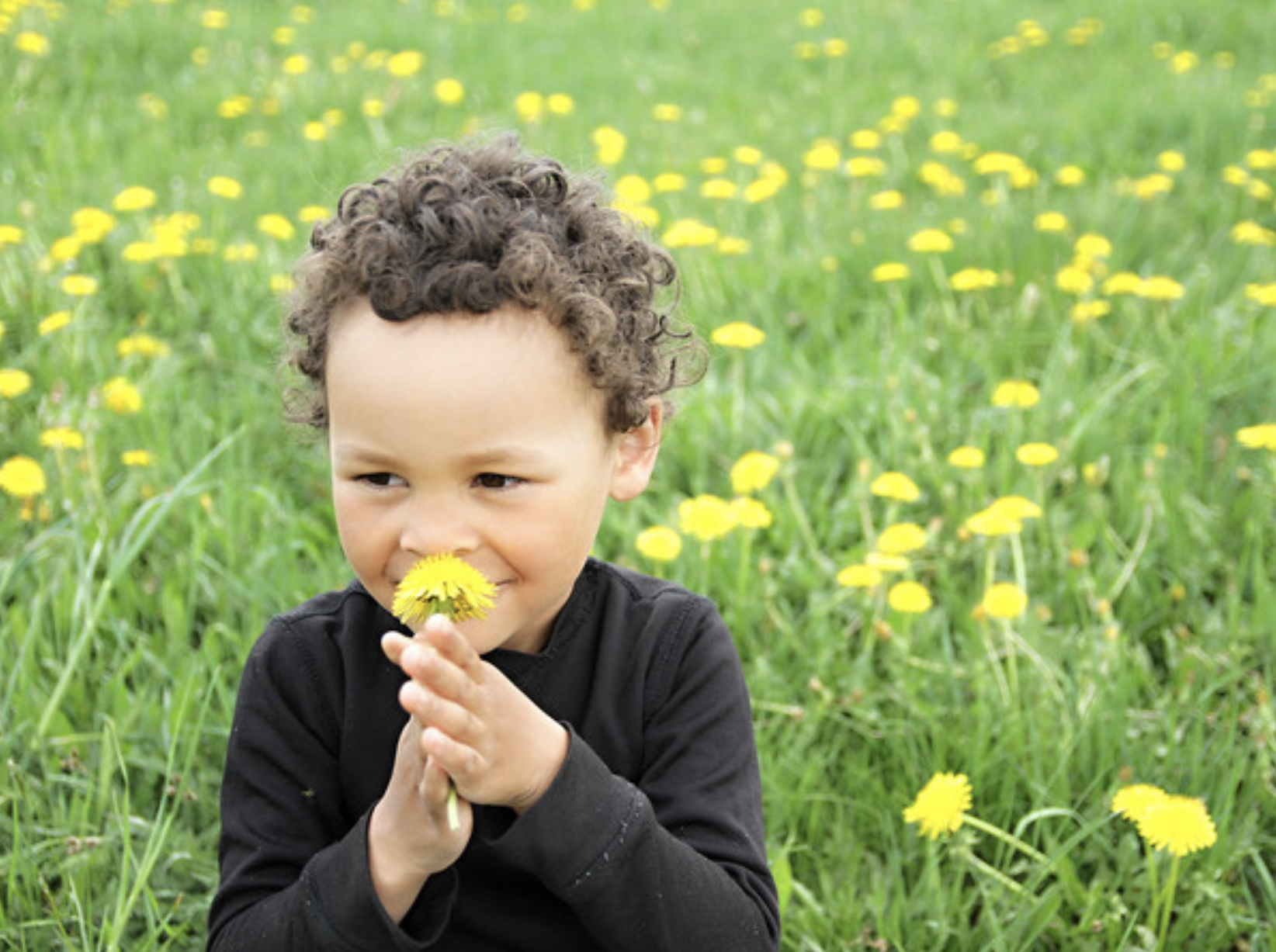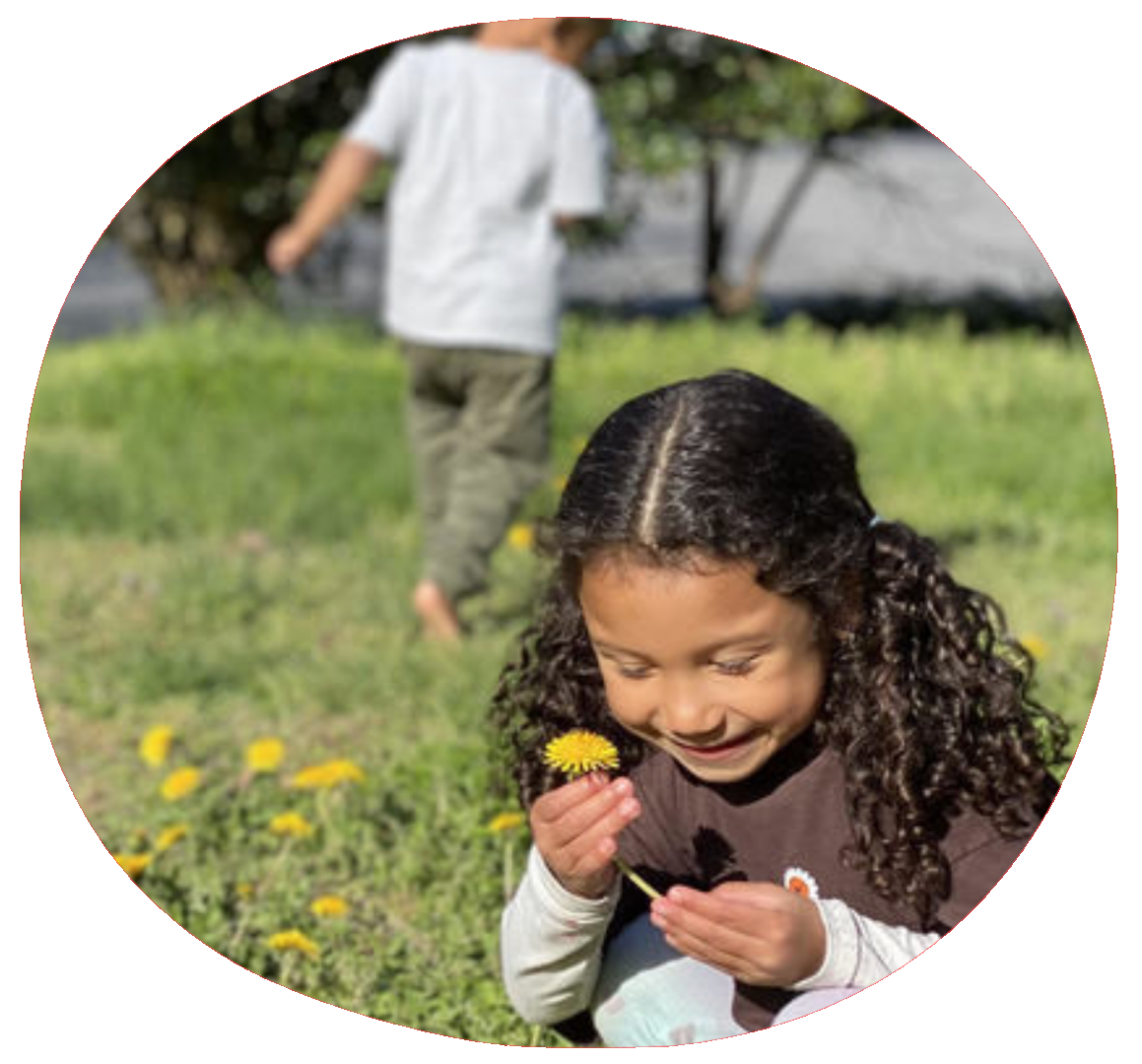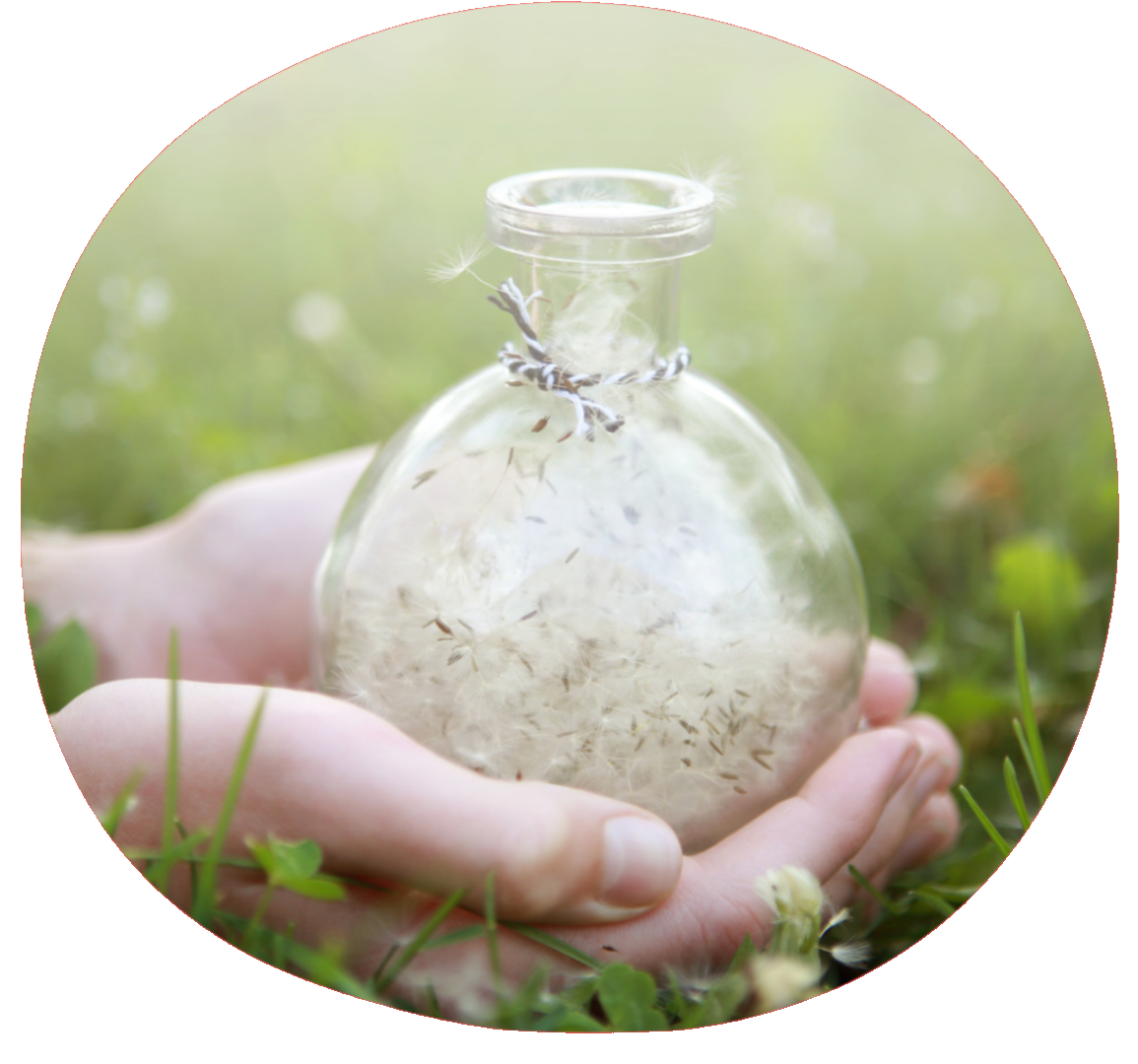When you think of dandelions, maybe it sparks memories of childhood, making wishes and warm days. Or, maybe you think of that pesky weed that pops up in your lawn and garden every spring. Or, maybe you just walk by and haven’t thought about dandelions for a while.
No matter how you feel about dandelions, they are a wonder weed, and they are fabulous tools for teaching a whole range of amazing things to kids. In honor of National Dandelion Day on April 5th, we share some of the reasons why we love dandelions and think they deserve their special day in the sun.
Persistence
Dandelions pop up early, and often in the darndest of places; they are total survivors.
Carefully pick a dandelion apart, and use a magnifying glass if you can. A single tiny dandelion has the stamen and pistols enough to produce 150-200 seeds on average. And, those seeds are not only endearingly fuzzy ways to make wishes on the wind. They’re designed to travel far—each with its own downy parachute to carry it for up to 5 miles on the wind and to germinate (sprout and start a new plant) remarkably quickly.
Dandelions thrive in almost any soil, and can wait up to seven years to sprout. The dandelion’s ability to put down roots anywhere and thrive in a broad range of climates is why it is known as the symbolic flower of the military child (April is also the month of the military child!).
“Military children bloom everywhere the winds carry them. They are hardy and upright. Their roots are strong, cultivated deeply in the culture of the military, planted swiftly and surely. They're ready to fly in the breezes that take them to new adventures, new lands, and new friends.”–Unknown Artist
Design
From their bright, sunny yellow color to the shape of their petals and leaves, they truly are a striking flower to behold. The name ‘Dandelion’ is derived from the French phrase ‘dents de lion’, because the shape of the plant’s leaves resembles a lion’s tooth.
Dandelions are also one of the few flowers that are equally fascinating in all its stages of the life cycle. Some have compared the dandelion flower’s three phases to the three celestial bodies—the yellow flower of the plant resembles the sun, the puff ball of the dandelion plant resembles the moon and the dispersing seeds of the plant resemble stars. And as if dancing with the rhythms of the natural world, the dandelion flower opens at the time of sunrise and closes at night. Amazing!
Supportive Sources of Food
Dandelions also play an important role in our ecosystem. First, they are an important food source for many pollinators like butterflies, insects, and birds that consume the seeds or nectar. Early in the spring, dandelions pop up to entice and offer pollinators like bees an essential, early source of food while other plants must take their time in producing more nourishing flowers.
Dandelion flowers, greens and seeds are an important source of nutrition for many other types of wildlife, including bears, deer, elk, rabbits and many species of birds.
Good for Humans
Dandelions are not only good for critters. Humans have long celebrated dandelions for their nutritional and healing abilities. Ancient Egyptians, Greeks and Romans used the flower medicinally, and they have been used in Chinese traditional medicine for over a thousand years. Dandelions were grown throughout Europe for food and medicine and were valued as one of the first fresh, nutritious vegetables of spring. Every part of the dandelion- roots, leaves, flower- has been used by humans for food, medicine and making dye. The plant is high in vitamins A, B, C, E, iron, potassium and calcium and is used as a digestive aid and to treat a variety of ailments and infections.
Not So Bad For Lawns!
Surprise! It turns out that far from being a nuisance to lawns, dandelions actually fertilize the grass. The dandelion’s wide-spreading roots loosen hard-packed soil, aerate the earth, help reduce erosion and pull nutrients from deep in the soil, making them available to other plants.
Joy!
Dandelions are just plain fun! No kid (and few grown-ups) can resist blowing and making wishes on dandelion puffballs! Want to capture that wish-making magic? Make a jar of wishes by collecting dandelion seeds in a container. Kids can pull one out and give it a blow whenever they want to make a wish).
And, their striking color and form make them a compelling play material for kids of all ages. The dandelion’s stiff, thick stems make them ideal for braiding, nature weaving or making flower crowns.
How You Can Help (& Teach Empathy)
As much as we love collecting dandelions for play, we also know that they do play a crucial role in nature for many other species, especially in early Spring. When dandelions are weeded out in pursuit of the perfect lawn or over-picked for play, we take that important early food source away from our friends, the bees—friends who are increasingly in danger and need our help!
To celebrate the dandelion this National Dandelion Day, take the Save the Dandelions challenge, spread the word and help save the bees, too! Here’s how:
- Pick Just One— Kids should experience the wonder of picking and exploring a dandelion. Plus, as David Sobel says, kids have to fall in love with nature before they are really ready to save it. So, pick one—and only one, promising to leave the rest for the bees.
- Make Dandelion Art—Many of us love to make dandelion crowns, soups and other things that use way more than one dandelion. In honor of the dandelion (and the bees), create a piece of art inspired by dandelions instead! Here are some ideas:
- Rub the petals from your one dandelion on a piece of paper. Or, use one of another yellow flower, or even a lemon! Then, use a marker, crayon or rub a blade of grass to make your stem.
- Pull out dandelion colors from your art supplies, grab paper and head outside. Let kids create whatever they like using paint, chalk, crayon, pastel, etc—whatever you've got!
- Look through old magazines for dandelion colors and rip or cut them out. Kids can rearrange those colors into a collage that represents or just reminds them of a dandelion.
- Search the yard for fallen, "on the ground" things that are yellow and green. The plants no longer need them, so kids can use them to make art! Glue them to paper or press them into forest putty or mud to create something new!
- If kids can write or draw, encourage them to create a "Save the Dandelions (and the bees!)” sign using whatever materials they have on hand.
- Encourage older kids to dissect their dandelion and draw some of the amazing structures inside!
- Take any loose parts and build your own 3-D dandelion!




